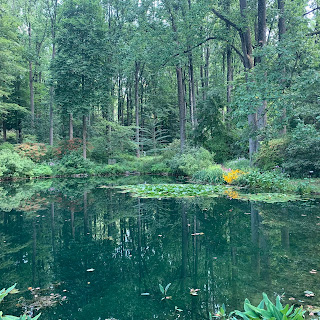Jeff--Saturday
I’ve had the great joy in
recent years of twice teaching an intense college level course on mystery
writing. On the third day of class I
gave my students the only objective test in my course, one based on The Elements of Style, the classic, very
brief manual also known as Strunk & White, after its original author
William Strunk Jr. (who composed it in 1918) and its 1959 reviser E.B. White (a
former student of Strunk at Cornell and author of Charlotte’s Web).
 |
| Strunk & White |
I don’t think there is a more
important book for writers to read and re-read regularly, and not just because Time magazine a few years back named it
one of the most influential books written in the English language since 1923.
But don’t just take my word (or
Time’s), listen to Stephen
Colbert using it to dress down Vampire Weekend for attacking the Oxford
comma in its lyrics (2:45-4:15).
Even for avant garde writers—and what college class lacks that breed—until
they know the basics of clear, direct writing, they really can’t properly mess
around with the forms. Grammar and word usage are the basic building blocks of
all writing. They are the writer’s toolbox, and practitioners must know and not
fear their tools.
The most experienced writers,
too, should re-read it at least every couple of years, and keep it close at
hand. After all, we do forget things as
we travel farther down this writing road, and need a tune-up every once in a
while if for no other reason than to recall how we still confuse lie and lay.
And for those of you who are
not—nor never intend on being—a “writer,” I have news for you: You are a writer, even if it’s only composing
an email, letter, or memo to your boss.
As much as you may not want to hear it, the substance of your thoughts
will in some measure be judged by your command of grammar, style, and
spelling. It’s just human nature.
So, read and re-read
everything you write, especially those emails, and put your composition out
there as clearly as you can…helped along I suggest by at least some familiarity
with “Srunknwhite,” as its affectionately known to English teachers. Trust me,
you’ll thank me.
Okay, today’s lecture is over—except
for this brief excerpt from the introduction to Part V of The Elements of Style. It is
a selection I always find challenging, humbling, yet ever inspiring:
There is no satisfactory explanation of style, no
infallible guide to good writing, no assurance that a person who thinks clearly
will be able to write clearly, no key that unlocks the door, no inflexible rule
by which writers may shape their course. Writers will often find themselves
steering by stars that are disturbingly in motion.
May the Force be with you on
the journey…or at least Strunk & White.
—Jeff













































































